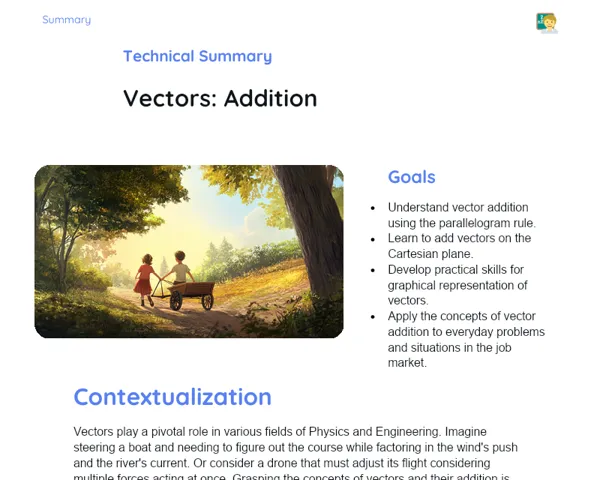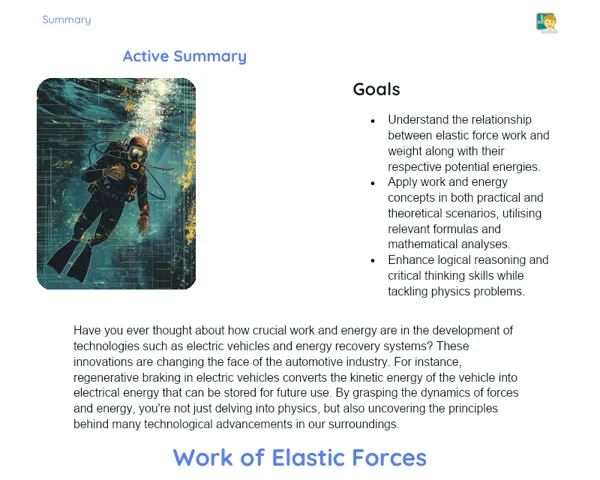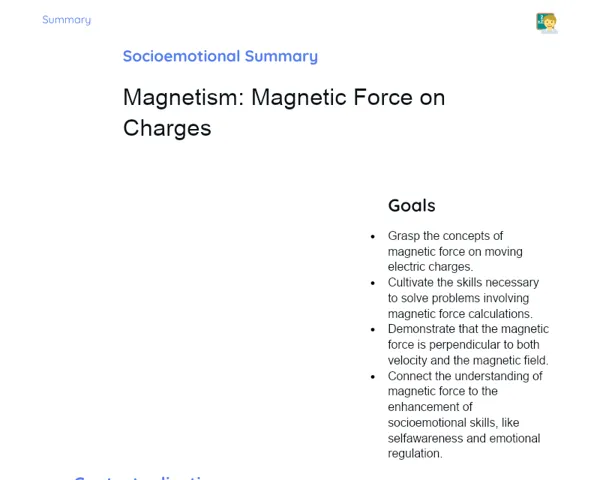Objectives
1. To empower you to calculate the magnetic field generated by solenoids, using mathematical formulas while understanding the key variables involved.
2. To develop your skills in solving practical problems related to calculating the magnetic fields of solenoids, applying your theoretical knowledge to real or hypothetical scenarios.
3. To stimulate your critical thinking and analytical skills when tackling physics problems associated with magnetic fields.
4. To encourage your teamwork abilities during hands-on classroom activities, fostering collaboration and discussion among classmates.
Contextualization
Did you know that solenoids are pivotal in the realm of modern technology? They're found in devices ranging from electrical locks to car ignition systems and even in biomedical engineering, playing a role in creating artificial heart valves. Grasping how solenoids function and how they generate controllable magnetic fields can unlock numerous practical applications, making the study of solenoids both exciting and relevant!
Important Topics
Magnetic Field Formula for a Solenoid
The formula to calculate the magnetic field at the center of a long solenoid is B = μ₀ * (N/L) * I. Here, B represents the magnetic field, μ₀ is the permeability of free space, N denotes the number of turns, L is the length of the solenoid, and I is the electric current. This formula illustrates how the solenoid’s physical characteristics and the current flowing through it impact the strength and direction of the magnetic field produced.
-
μ₀ (Permeability of free space) - a fundamental constant in physics that indicates how magnetic fields permeate through space.
-
N/L (Number of turns per unit length) - reveals the density of the turns; as it increases, so does the intensity of the magnetic field.
-
I (Electric current) - the current passing through the solenoid wire is directly proportional to the strength of the magnetic field generated.
Practical Applications of the Solenoid
Solenoids find applications in a wide range of practical scenarios, from actuators in electric locks to vital components in medical devices like pacemakers. They convert electrical energy into mechanical force, making them indispensable in automated systems and technologies that require precise movement.
-
Electric locks - solenoids facilitate linear movement, enabling locks to activate or deactivate.
-
Magnetic levitation systems - solenoids use magnetic fields to suspend and move objects, as seen in high-speed trains.
-
Medical devices - for instance, in pacemakers, solenoids assist in regulating mechanisms that control heart rhythms.
Challenges in Building and Calculating Solenoids
Designing and implementing solenoids presents notable challenges, particularly concerning the precision of calculations and the handling of materials. Accuracy is vital to ensure that the solenoid performs as intended; any errors in the number of turns or the current can lead to suboptimal performance or failure.
-
Calculation accuracy - miscalculations in the number of turns or current can adversely affect the efficacy of the solenoid.
-
Material selection - selecting the right wire material is crucial for optimizing efficiency and performance.
-
Design considerations - the solenoid's size and shape must be crafted to maximize uniformity and strength of the magnetic field.
Key Terms
-
Magnetic Field (B) - a quantitative representation of the magnetic influence exerted by electric currents and magnetic materials.
-
Magnetic Permeability (μ₀) - a measure of how magnetizable a material is when subjected to an external magnetic field, or how free space responds to such a field.
-
Turns (N) - loops of wire forming the solenoid, with each loop contributing to amplifying the generated magnetic field.
-
Electric Current (I) - the flow of electric charge that generates a magnetic field around the solenoid when it passes through.
For Reflection
-
How does increasing the number of turns in a solenoid influence the strength of the magnetic field, and what practical effects might this increase have?
-
In what ways can the use of solenoids in medical devices drive advancements in healthcare and enhance quality of life?
-
What are the primary technical and theoretical hurdles in implementing magnetic levitation systems, and how can these challenges be surmounted?
Important Conclusions
-
Today, we delved into the fascinating world of solenoids and their role in generating magnetic fields. We learned to calculate the magnetic field in solenoids using the formula B = μ₀ * (N/L) * I and discussed the impact of each variable on the magnetic field's strength.
-
We explored how solenoids are integrated into daily technology, from electric locks to magnetic levitation systems, showcasing the practical significance of this concept across various fields of engineering and technology.
-
We underscored the necessity of precision in calculations and material choice for constructing efficient solenoids, highlighting potential technical challenges and strategies to address them.
To Exercise Knowledge
- Calculate the magnetic field of a solenoid with varying numbers of turns and compare the findings. 2. Sketch a solenoid suitable for use in an electric lock, keeping in mind the technical specifications discussed. 3. Prepare a brief report on how solenoids are utilized in a technology of your choice, detailing the magnetic field's role in the device's functionality.
Challenge
Design your own magnetic levitation system with solenoids! Use recyclable materials and create sketches or physical models to demonstrate its operation. Explain how you would apply the magnetic field concepts we've learned to make your model function.
Study Tips
-
Review the magnetic field formula in solenoids and practice with additional examples to solidify your understanding.
-
Watch online videos and simulations exploring solenoid applications in various technologies to visualize the concepts in action.
-
Engage in discussions with your peers about the practical uses of solenoids and try to pinpoint new applications that weren't touched upon in class.



